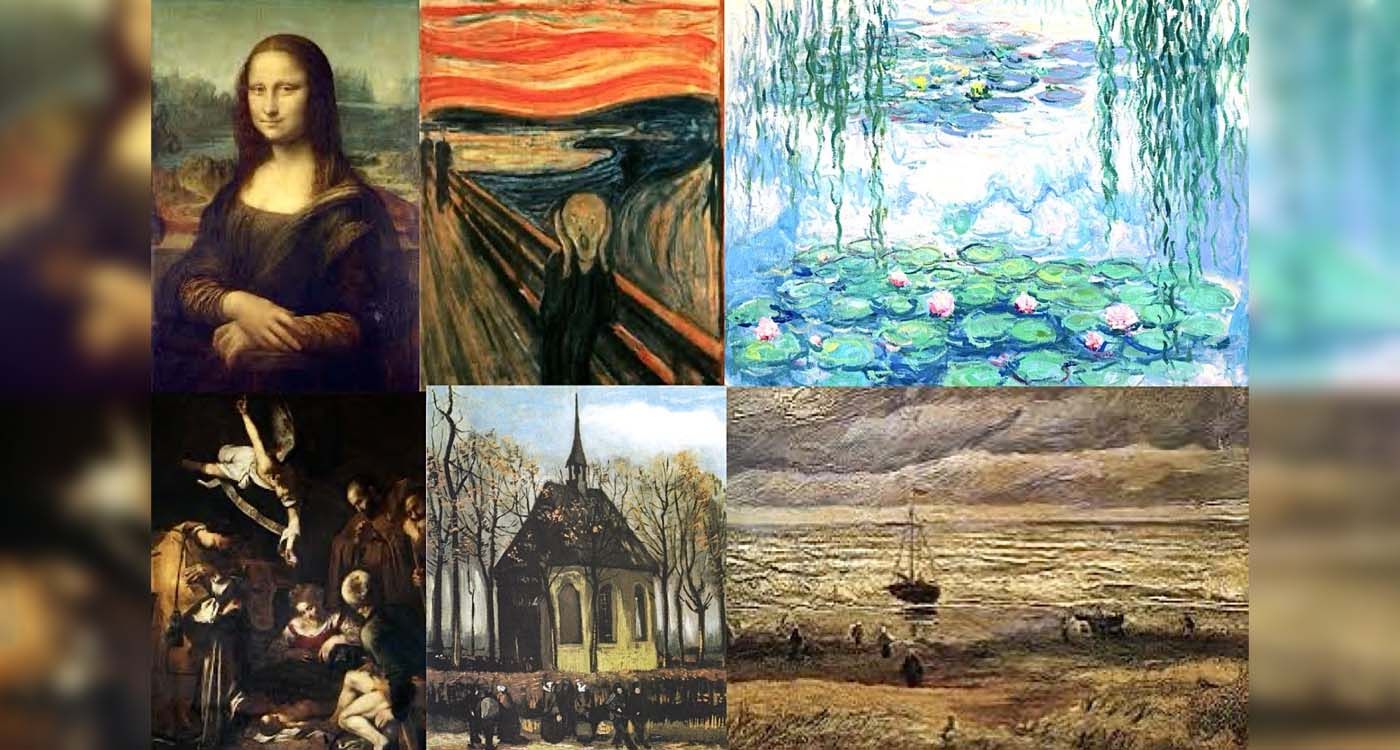
Between the gilded halls of museums and the shadowy depths of criminal networks, some masterpieces have vanished in daring escapes. From ingenious thieves to paintings turned legends, these are the disappearances that have been etched into history… under the cover of night.
When a masterpiece disappears, a void opens in collective memory. Visitors pause before the empty frame, whispering stories and imagining the audacity of the theft. The moment art slips into shadow, legend takes over. Disappearance grants a fame no peaceful exhibition could ever match. An art theft is never just another crime. It strikes at the heritage of all, that fragment of beauty humanity believes it owns simply by beholding it.
The Mona Lisa: When Absence Becomes Glory
It all truly began in Paris in 1911. Vincenzo Peruggia, a glazier and former Louvre employee, used his insider knowledge to his advantage. Calmly, he removed the Mona Lisa from its frame, hid it beneath his coat and vanished. For two years, the world wondered where the enigmatic smile had gone. The affair became a global media sensation. In a supreme irony, it was this theft that transformed the Mona Lisa into the most famous painting in the world. In 1913, Peruggia tried to sell it in Italy. When he was arrested, he defended himself as a patriot, claiming he merely wished to “return” the work to its country of origin. The legend, however, would never leave the painting.
Van Gogh Held Hostage by the Mafia
Van Gogh, who died in poverty, could never have imagined that his paintings would become currency for organized crime. In 2002, two men broke into Amsterdam’s Van Gogh Museum and stole two iconic works: View of the Sea at Scheveningen and The Parsonage Garden at Nuenen. Valued at over $30 million, the paintings disappeared for 14 years. They resurfaced in 2016, recovered by Italian police during a crackdown on the Camorra. Hidden in a house in Naples, they had survived as hostages of organized crime.
The Heist of the Century in Boston
On March 18, 1990, at the Isabella Stewart Gardner Museum in Boston, two men posing as police officers rang the doorbell. The guards, deceived, let them in. In just 81 minutes, 13 major works vanished, including pieces by Rembrandt, Vermeer, Manet and Degas. The loot is now valued at $500 million. Yet, what continues to haunt the museum are the empty frames left behind, a permanent reminder of the loss. More than 30 years later, none of the paintings have been recovered, and the mystery endures, fueled by a $10 million reward for any information.
Munch and the Stifled Scream
In February 1994, as Norway prepared for the Lillehammer Winter Olympics, shock struck Oslo: Edvard Munch’s The Scream disappeared from the National Museum. The thieves left a mocking note that read, “Thanks for the poor security.” A few months later, the painting was recovered in a joint operation by the Norwegian police and Scotland Yard. The Scream had traveled through the night, only amplifying its status as an anguished icon of the modern world.
Paris Humiliated: Water Lilies and the Spider-Man Thief
Paris, the capital of art, has also been the scene of spectacular thefts. In 1985, an armed commando stormed the Marmottan Museum and stole nine Impressionist paintings, including Monet’s Water Lilies, valued at $12 million. After five years of uncertainty, the paintings were finally recovered in 1990.
Humiliation struck again in 2010 at the Musée d’Art Moderne. A lone man, nicknamed “the Spider-Man,” exploited a lapse in the security cameras. In a single night, he stole five paintings by Picasso, Braque, Matisse, Léger and Modigliani, valued at €100 million. The thief was arrested, but the artworks appear to have vanished forever.
The Sunken Caravaggio
Among the most tragic art disappearances is Caravaggio’s The Nativity with Saint Francis and Saint Lawrence. In 1969, the monumental Baroque painting was stolen from the Church of San Lorenzo in Palermo. Since then, it has vanished without a trace. The Sicilian mafia is widely suspected. Some former criminals claim it was destroyed, while others insist it lies hidden in a secret cache, slowly decaying from damp and neglect. No one knows for certain. This painful absence remains an open wound in the history of Italian art.
When War Becomes Plunder
Art theft is not only the work of audacious thieves or organized crime. War itself devours masterpieces. During World War II, the Nazis systematically looted Europe’s collections. Thousands of paintings were seized, stored in warehouses or absorbed into the private collections of high-ranking officials. Some, like the Rothschild collection, were returned after 1945. Many others remain lost or hidden, ghosts of a heritage stolen forever.
These thefts reveal a paradox: a stolen work becomes unsellable, trapped in shadows and vaults. Its true value only awakens when seen by the public. Every restitution is more than a legal victory. It is a return to the light, to the place where art belongs to everyone.




Comments